
Nigeria Zero Hunger/IITA Policy Brief No. 5: Nigeria Zero Hunger Strategic Review – Nutritional Status of Children under the Age of 5 in Kebbi State, Nigeria
*Corresponding Author(s):
Iheanacho OkikeInternational Institute Of Tropical Agriculture Iita, PMB 5320, Ibadan, Oyo State, Nigeria
Email:I.OKIKE@CGIAR.ORG
Background
The Federal Republic of Nigeria committed to achieving the “2030 Agenda for Sustainable Development” (also known as Sustainable Development Goals - SDGs) in September 2015. There are 17 SDGs from which Nigeria prioritized SDG 2, the so-called Zero Hunger goal, calling on member states to “End hunger, achieve food security and improved nutrition, and promote sustainable agriculture” by 2030 [1]. Following Nigeria’s commitment to this initiative and under the leadership of His Excellency, Chief Olusegun Obasanjo, former President of the Federal Republic of Nigeria, the Nigeria Zero Hunger Strategic Review (aka “The Review”) was established. Through an open and consultative process, the Review sought to articulate what Nigeria must do to achieve SDG2 (zero hunger) by 2030. It was deemed necessary to conduct a baseline survey to establish the true situation at the start of the review to enable tracking of the progress. The International Institute of Tropical Agriculture (IITA) was charged with the responsibility to lead baseline surveys in partnership with the Farm & Infrastructure Foundation (FIF) in five states-Benue, Ebonyi, Kebbi, Ogun, and Sokoto-spread across four of Nigeria’s six major agroecological zones to also capture the country’s gradients of agricultural intensification and market access. Following a design workshop by stakeholders, field activities for data collection were conducted with full support of governments in the states, the National Bureau of Statistics (NBS), UNICEF and the World Food Programme (WFP). The preliminary findings of the surveys were reviewed and validated by the representatives of the five states and other stakeholders at IITA, Ibadan in 2017. This policy brief summarizes findings for key parameters for Kebbi state especially on the issues of poverty, hunger, nutrition & health care, and other nutritional outcomes in children under 5 years of age. It ends with policy recommendation to attain the goals of SDG2. The statistical comparisons summarized are between Kebbi state and the average from all 5 surveyed states.
Household Poverty And Hunger
51.4% of households in Kebbi state live below US$1.9 per person per day compared to an average of 28.9% of households in all five states. On hunger, 47.4% of households experience hunger broken down to 30.1% at moderate level and 17.3% as severe compared to an average of 27.7% (with 17.1% and 10.6% of households in the surveyed states experiencing hunger, moderately and severely respectively). The combined effects of poverty and hunger on households was even more devastating for Kebbi households where 62.8% are poor and suffering severe hunger (Figure 1) compared to an average of 45.4% of households in other states (Figure 2).
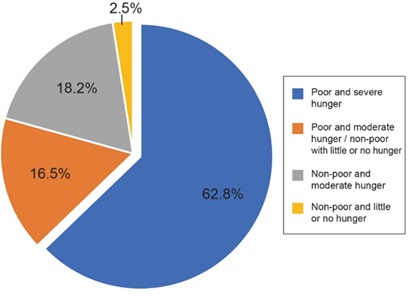
Figure 1: Effect of combining hunger and poverty (% of households) in Kebbi state, Nigeria.
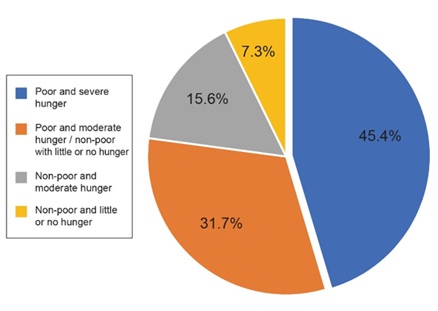 Figure 2: Effect of combining hunger and poverty (% of households) in Benue, Ebonyi, Kebbi, Ogun and Sokoto states, Nigeria.
Figure 2: Effect of combining hunger and poverty (% of households) in Benue, Ebonyi, Kebbi, Ogun and Sokoto states, Nigeria.
Child Breastfeeding And Complementary Feeding
Child nutrition was studied in terms of infant and young child feeding practices and complementary feed offered to infant (during weaning). Breastfeeding practices had similar profiles and no cause for concern in Kebbi state compared to profiles for the rest of Nigeria presented in Food and Nutrition Technical Assistance (FANTA2) in WHO [2] (Figure 3). However, a large majority of mothers and caregivers offered unfortified local cereal of doubtful dietary quality as complementary feed (Figure 4). They lagged behind in offering infant formulae and/or supplementation of local cereal. The net effect of the lop-sided proportion of unfortified cereal meals compared to fortified meals offered impacted the nutritional status of children. Analyses by age showed that the worst cases of malnutrition occurred during the second year of infancy which also coincides with when complementary feed is given.
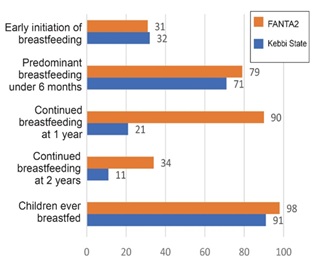
Figure 3: Child breastfeeding practices in Kebbi State, Nigeria compared to FANTA2.
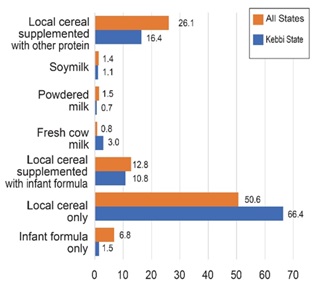 .Figure 4: Proportion of mothers (%) offering various types of complementary feed to their infants in Kebbi State compared to other surveyed states.
.Figure 4: Proportion of mothers (%) offering various types of complementary feed to their infants in Kebbi State compared to other surveyed states.
Child Health Care And Nutritional Status
Kebbi state, compared to other states, was found to be behind for mothers or caregivers starting immunization (61.5% compared to 65.3%) and completing immunization (38.2% compared to 61.2%) for their infants and children. This inaction of not presenting their children and infants for immunization exposed more than 60% of the children to preventable diseases in the study year. Kebbi state was equally behind on visible signs of oedema, recumbency & disability, cough, fever and diarrhoea prevalence compared to the other states surveyed (Figure 5). This is not good enough and needs to be addressed.
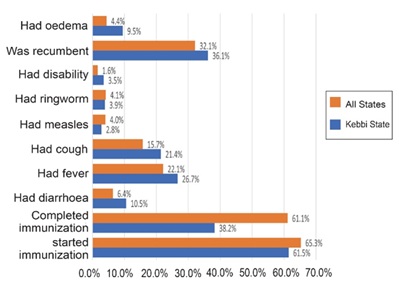 Figure 5: An overview of proportion of child health/care events in Kebbi state compared to the average of all surveyed states, Nigeria.
Figure 5: An overview of proportion of child health/care events in Kebbi state compared to the average of all surveyed states, Nigeria.
Bringing it all together and analyzing the combined and measurable impacts of poverty, hunger, nutrition and health on the well-being of children and infants, Kebbi state falls behind both the global average for developing countries and the average for the studied states for Weight-for-Age Z-scores (WAZ) and Height-for-Age Z-scores (HAZ) which measure short-term and longer-term nutritional status of children respectively. For example, while global average for underweight was 8.9% in 2015 [3], figure 6 shows that 22.8% of the children in Kebbi state were underweight of which 8.4% were severely underweight. Of great concern is the coexistence of underweight and overweight as 17.2% of the children were overweight with 16.5% of them obese.
 Figure 6: Prevalence of malnutrition (%) among children under 5 in Kebbi state compared to other surveyed states.
Figure 6: Prevalence of malnutrition (%) among children under 5 in Kebbi state compared to other surveyed states.
For stunting, the global average for developing countries in 2015 [3], was 25% compare to 33.9% stunting in Kebbi state out of which 28.1% were severely stunted. Policy makers in Kebbi state must be alarmed by these figures and determined to take every possible measure to address them.
Policy
The policy analysis component of the baseline study investigated the state for the presence or absence of programs, projects, and other initiatives of the public authorities required to create and sustain an enabling policy environment for achieving Zero Hunger targets by 2030. The results are detailed in the main report. However, here is a summary of the key findings:
Policy articulation
Kebbi State had produced a number of policy documents for general agriculture development over time. However, these were far in-between and none of them focused nutritional objectives as part of its overall policy objectives:
- Kebbi State Agricultural Blue-Print, approved in 2005.
- Kebbi Agricultural Transformation and Self-Help Initiative (KATASHI) on Rice Production, on 10 April 2006.
- Kebbi State Rice Initiative Project Policy (2013).
- Kebbi State Livestock Value Chain and Modern Bee Keeping Enhancement Project Policy.
For the five states surveyed, the review of policies revealed the need to produce a concrete policy document for agricultural and food security with popular participation by stakeholders in the articulation of policy documents. There is a lack of philosophical context on which to anchor the contents of the policy documents for food security in the state. Recognizing the role of infrastructure as the backbone in agricultural development; it is recommended a systematic provision of rural infrastructure in the policy documents of the state, consistent with the provision for agriculture or food security in the Constitution. In many instances, no data was available to assess the potency of policy instruments in respect of certain targets required for meeting the SDG2, implying that little or nothing is going on in these States relating to these aspects. The need arises for Kebbi state to conduct a comprehensive review of its food and nutrition security policy, in order to explore opportunities for meeting the Zero Hunger targets and to incorporate the tenets of food as a human right in the new policy, both of which are in consonance with global trends.
Policy implementation
Among other requirements, Zero Hunger implementation mandatorily involves exploring partnership opportunities to grow agricultural investments, trade and food market development; such partnerships with federal government, other States of the federation, private companies, and international agencies in agriculture, trade and finance. Among the different partnerships observed the pre-existence of a partnership between Kebbi State and Lagos State on rice production and marketing is unique and exemplary.
Other problems and challenges occur at the stage of implementation. Such constraints are usually shortage of funds and inadequate human and material capacity for effective implementation of policies. To ensure that the goal of Zero Hunger is met in the state, the above challenges could be addressed through the exchange of experiences with other states, improved internal coordination, and better and focused support of the national and international agencies during implementation. It is paramount to explore opportunities for integrating objectives of Zero Hunger into state projects and programs for attaining food security such as those implemented in collaboration with the private sector and in partnership with international agencies such as UNDP, FAO, IFAD, and the World Bank. It was observed that this cooperation or partnership has led to the superior responsibility of the state for agricultural development being subjugated and subordinated to the above national and international agencies. This process undermines the constitutional provision for the states to be in the lead as drivers of the policy processes for agricultural development. The well-entrenched practice does not augur well for the sustainability of policy efforts for meeting the SDG in the long term in these states.
Conclusion
Based on the average results revealed by this survey on poverty, hunger, child health care and child anthropometry and comparing against those of developing countries are poor. The results for Kebbi state are even poorer than the averages and lead to the conclusion that Kebbi state has a long way to go to reach the Zero Hunger goal. There is a consensus that sustainable development goals require all countries and their citizens to act together to end hunger and all forms of malnutrition by 2030. Setting targets is a good first step, but actions need to follow quickly. Adequately funded policy action must be designed to reduce malnutrition in all its forms. The most nutritionally vulnerable people, must be targeted with strategies which must be evidence based, implemented at scale, and include both broad based and targeted actions. A planetary challenge on a par with poverty and climate change is represented here by the rapidly escalating threats posed by malnutrition. An appropriate response at the required scale and with renewed vigour is top priority for decision makers in Kebbi state.
References
- United Nations (2015) Transforming our world: the 2030 Agenda for Sustainable Development Resolution adopted by the General Assembly on 25 September 2015 (A/RES/70/1).
- WHO (2010) Indicators for assessing infant and young child feeding practices. Parts 1,2 and 3. FANTA 2 - Food and Nutrition Technical Assistance.
- International Food Policy Research Institute (2015) Global Nutrition Report 2015: Actions and Accountability to Advance Nutrition and Sustainable Development. Washington, DC, USA.
Citation: Okike I, Ayoola GB, Ogundapo A, Ojide M, Abdoulaye T, et al. (2021) Nigeria Zero Hunger/IITA Policy Brief No. 5: Nigeria Zero Hunger Strategic Review – Nutritional Status of Children under the Age of 5 in Kebbi State, Nigeria. J Food Sci Nutr 7: 119.
Copyright: © 2021 Iheanacho Okike, et al. This is an open-access article distributed under the terms of the Creative Commons Attribution License, which permits unrestricted use, distribution, and reproduction in any medium, provided the original author and source are credited.

